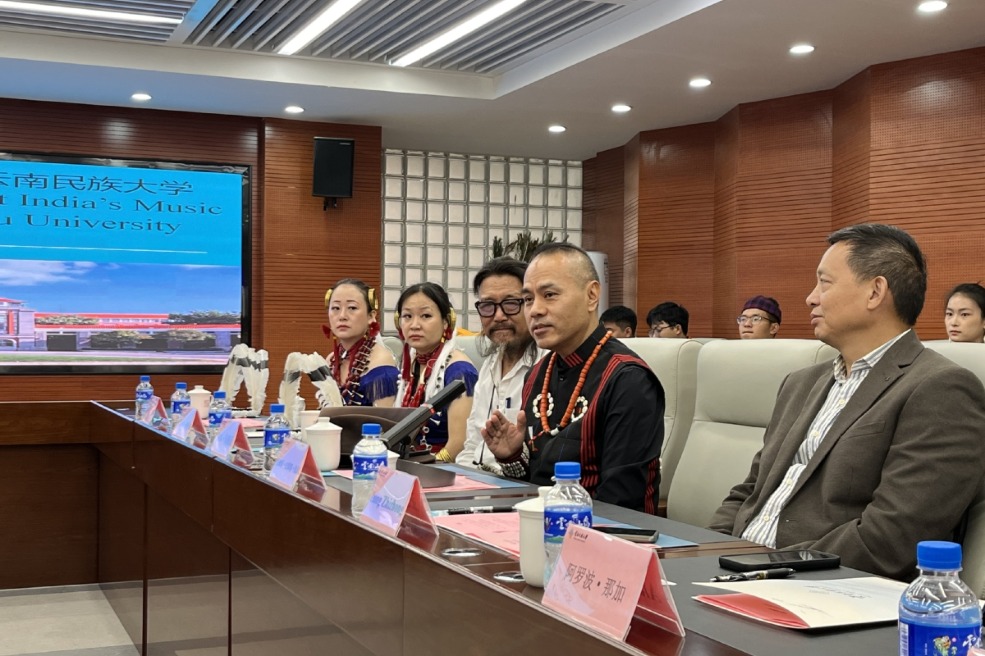How digital technology fights poverty
E-commerce and online finance have empowered the poor in rural areas
By JIANG XIHENG | China Daily Global | Updated: 2020-09-15 07:35

Digital technology is being increasingly adopted to carry out economic and social activities, and is profoundly transforming production patterns and people's lifestyles. However, it is essential that the adoption of digital technology in developing countries does not widen the rich-poor gap. In China, e-commerce, digitally inclusive finance, and poverty alleviation programs supported by big data have had positive impacts on poverty reduction.
E-commerce promotes growth in incomes and capacity-building for the poor. China has the world's fastest-growing e-commerce market, where more than 40 percent of global e-commerce transactions take place. Many poor people have benefited from the booming e-commerce industry. For example, the National Rural E-commerce Comprehensive Demonstration Project has helped nearly 3 million registered impoverished households realize income growth. In 2019, online retail sales in 832 poverty-stricken counties reached 107.6 billion yuan ($15.7 billion).
E-commerce platforms have greatly reduced the threshold for small and micro businesses to enter the market. Rural residents that were marginalized because of their geographic location can now display their farm produce and handicrafts online and find buyers, thereby increasing sales and revenue. Also, e-commerce drives the development of whole industrial chains, creating job opportunities and providing diverse options for rural labor. Online retailing has created over 28 million jobs in rural China. In addition, rural e-commerce benefits disadvantaged groups such as women with children and the elderly. The ratio of male to female entrepreneurs on e-commerce platform Alibaba is close to 1:1, compared to 3:1 for the entire business sector.
E-commerce also provides learning opportunities, thus stimulating the entrepreneurial potential of the poor. Between April 2015 and March 2017, 1.12 million people from 765 national-level poverty-stricken counties joined 559 courses offered by Taobao University online. High investment costs have always proved to be a development bottleneck for small and micro-enterprises. Many countries have explored different ways of providing them loans, but many still encounter difficulties getting loans. However, the G20 High-Level Principles for Digital Financial Inclusion endorsed by the G20 in 2016 marked the beginning of the digital era of inclusive finance.
In China, traditional financial institutions utilize digital technologies to improve the availability of financial services for marginalized groups. Financial agencies also support non-cash payments for the bulk purchase of farm produce such as grains, and the issuance of pensions, medical insurance, and agricultural subsidies to the rural population.
Since its establishment in 2015, China's first cloud computing-based commercial bank, MYbank, has provided contactless loans to more than 4 million clients in 146 poverty-stricken counties. In 2017, JD.com launched a digital agricultural loan. In two years, this project has collaborated with more than 100 cooperatives in Shandong, Hebei, and Henan provinces and other places, providing roughly 1 billion yuan in loans, with zero overdue repayments and defaults.
Big data, too, supports targeted poverty alleviation, by improving the accuracy and ensuring the fairness of poverty identification. In 2014, the Ministry of Civil Affairs began promoting the establishment of information verification platforms based on big data in different regions.
As of October last year, big data platforms have covered 96.8 percent of provincial-level areas and 91.9 percent of prefecture-level areas. In fact, using big data to pre-screen poor families is now the norm. Comprehensive analysis of impoverished areas through big data helps formulate targeted assistance. With the combination of geographical information such as climate and landform, and social information such as family composition, personal capabilities, economic and financial conditions, big data helps analyze the reasons for poverty at the county, village, and household levels, providing stronger support for poverty alleviation.
However, the application of big data still needs improving. Only 5.9 percent of China's cities have databases for professional data development, and only 1.8 percent of cities have submitted reports to higher authorities based on big data analysis.
Real-time data sharing and the dynamic comparison of various databases on poverty alleviation, education, industry and commerce, civil affairs and health and other areas can improve the efficiency of using public resources such as fiscal funds. It can also track and monitor the progress and efficiency of poverty alleviation in different regions and organizations.
Multi-dimensional data assists government agencies in choosing the most appropriate poverty alleviation projects and the setting of reasonable poverty standards. For example, in Shanghai, big data is widely used to set the annual poverty standard. Research based on big data, such as "the minimum living standard based on checked data", provide recommendations to government agencies such as the Ministry of Civil Affairs on national social policies.
Digital technology has been playing a positive role in China's poverty reduction. Nevertheless, some conditions enabling this should be noted:
As of March 2020, China's internet coverage rate reached 64.5 percent. More than 98 percent of administrative villages have fiber optic internet connections and 4G, and 99 percent of poverty-stricken villages have broadband access, guaranteeing internet access for the vast majority of people via computers or mobiles. Besides, thanks to traditional infrastructure such as power grids and roads, people in most residential areas in China enjoy a stable power supply and transportation facilities.
Governments at all levels keep an open and encouraging attitude toward the development of the digital economy and actively cooperate with digital companies to better identify and help the poor.
Through e-commerce, financial services, and related philanthropic programs, digital platforms have helped empower women, young people, the disabled, and small businesses in impoverished areas. With the digital platforms, these groups can have access to broader markets, obtain low-cost development opportunities, and escape poverty through entrepreneurship or employment.
The author is a vice-president at the China Center for International Knowledge on Development. The author contributed this article to China Watch, a think tank powered by China Daily. The views do not necessarily reflect those of China Daily.
If you have a specific expertise and would like to contribute to China Daily, please contact us at editor@chinawatch.cn
























